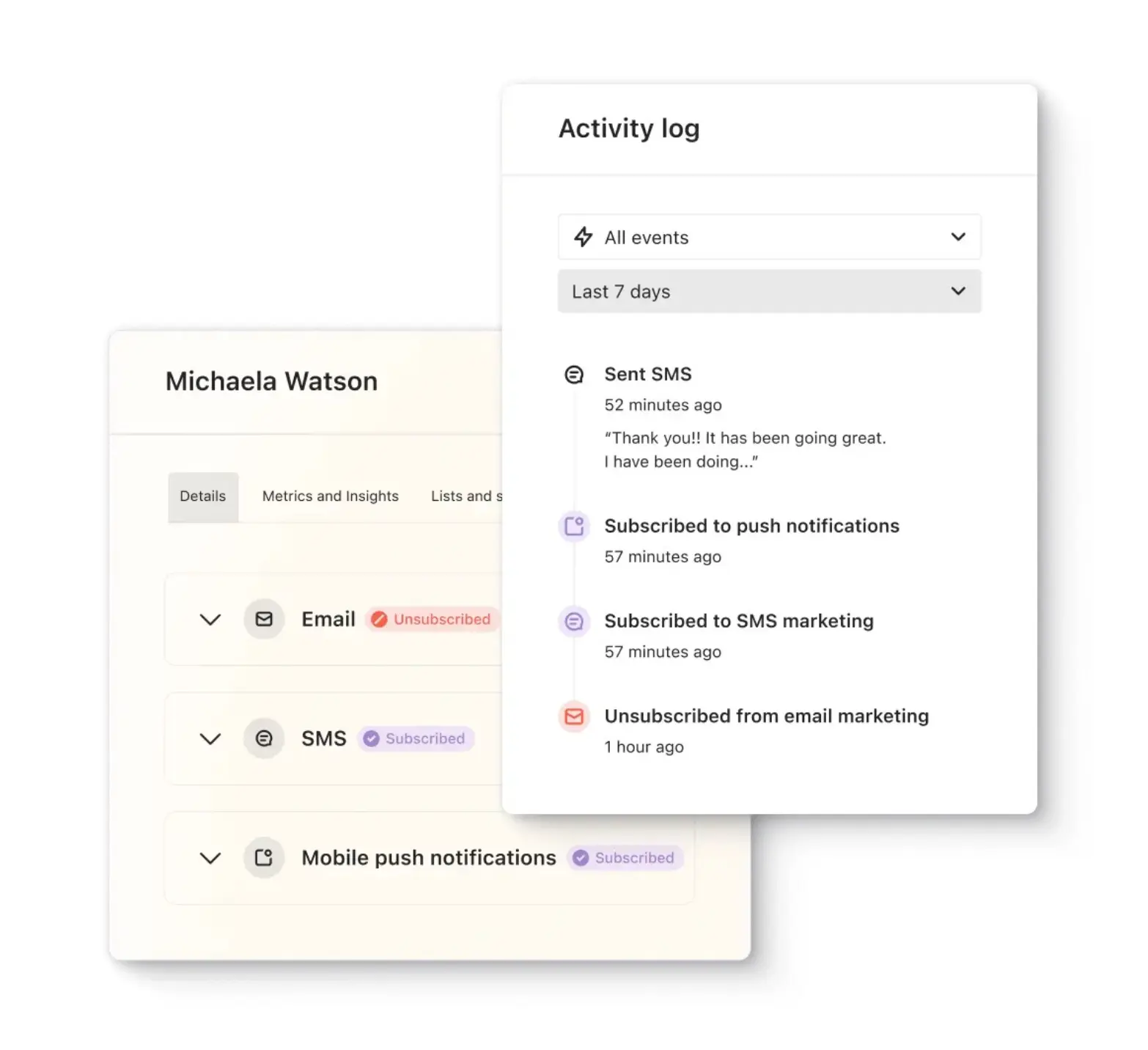What is SMS?
An SMS (short message service) is a text message sent between mobile devices through a cellular network. It can include text or a combination of text and symbols like emojis, with a limit of up to 160 characters.
SMS is a popular marketing channel because:
- They drive purchases—72% of people have made a purchase after receiving a text from a brand.
- People who buy from text messages are buying more often.
- SMS speeds up time to purchase.
You can use SMS in your brand’s mobile marketing efforts to engage customers, offer updates and special discounts, and create personalized cross-channel experiences.
Still, if you want to use SMS for this purpose, you need explicit consent from your target audience—otherwise, you’re breaking the law.
How to create an SMS marketing campaign
To use SMS in your marketing program, follow the steps below:
1. Choose a marketing automation platform
Your marketing automation platform should make it easy to run an owned marketing strategy from end to end, which includes SMS.
Here’s what to look for in a marketing automation platform:
- AI copywriting assistance: Send messages at scale with help from advanced algorithms and saved quick responses.
- Templates: Choose a platform that offers pre-made templates so you’re not starting from scratch.
- Segmentation: Opt for a platform that lets you segment your audience into groups and customize triggers for sending messages.
2. Add subscribers
To build an SMS subscriber list:
- Collect phone numbers with SMS sign-up forms.
- Import subscribers if you already have a list of people who gave their consent.
Once you have your subscriber list, segment them based on specific criteria to make sure each person receives relevant and personalized content.
3. Craft SMS copy
Here are some best practices for creating messages:
- Keep it under ~155 characters.
- Include a CTA.
- Use your subscribers’ first names or reference products purchased in the past.
- Avoid spammy language and phrasing (e.g. free access, pure profit, once in a lifetime, you have been selected, etc.)
Once you’re done, automate messages based on specific recipient actions, dates, or other triggers.
4. Track performance
Regularly monitor the success of your SMS messages by tracking metrics such as:
- Click rates
- Placed order rates
- Unsubscribe rates
Based on performance, adjust parts of your SMS strategy if necessary.
SMS vs. MMS: What is the difference?
While an SMS is limited to text, MMS supports images and gifs.

To start sending SMS messages to your audience, use Klaviyo SMS marketing to:
- Grow your list with targeted sign-up forms, QR codes, consent at check-out, and AI-powered forms display optimization.
- Send personalized messages with hyper-specific audience targeting.
- Speed up content creation with AI-generated copy and replies.